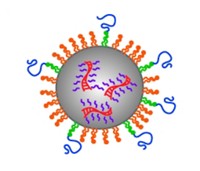Advertisement
Grab your lab coat. Let's get started
Welcome!
Welcome!
Create an account below to get 6 C&EN articles per month, receive newsletters and more - all free.
It seems this is your first time logging in online. Please enter the following information to continue.
As an ACS member you automatically get access to this site. All we need is few more details to create your reading experience.
Not you? Sign in with a different account.
Not you? Sign in with a different account.
ERROR 1
ERROR 1
ERROR 2
ERROR 2
ERROR 2
ERROR 2
ERROR 2
Password and Confirm password must match.
If you have an ACS member number, please enter it here so we can link this account to your membership. (optional)
ERROR 2
ACS values your privacy. By submitting your information, you are gaining access to C&EN and subscribing to our weekly newsletter. We use the information you provide to make your reading experience better, and we will never sell your data to third party members.
Analytical Chemistry
Fluorescent Tag Takes The Wheel
Fluorescein study shows that presumed nonreactive labels can sometimes control the destination of bioconjugates
by Celia Henry Arnaud
June 22, 2009
| A version of this story appeared in
Volume 87, Issue 25
Scientists usually consider fluorescent labels on biomolecule delivery vehicles to be passengers along for the ride. But in some cases, those labels might actually be in the driver's seat. Caltech's Jacqueline K. Barton and Cindy A. Puckett have found that a ruthenium complex conjugated to the cell-penetrating peptide octaarginine displays different cellular uptake behavior when it is tagged with fluorescein (J. Am. Chem. Soc., DOI: 10.1021/ja9025165). The ruthenium complex is itself fluorescent, so the researchers can see the conjugate with or without the dye. Without fluorescein, the ruthenium-octaarginine conjugate remains outside the cell nucleus, although at high concentrations the octaarginine begins guiding the conjugate into the nucleus. With fluorescein, the conjugate is guided more quickly into the nucleus, even at low concentrations. A conjugate formed from fluorescein and the ruthenium complex, without octaarginine to guide it, doesn't travel into the nucleus. "It's a reminder that we really do have to worry about whether the tail is wagging the dog and how you are perturbing the system when you attach fluorescent probes," Barton says.




Join the conversation
Contact the reporter
Submit a Letter to the Editor for publication
Engage with us on Twitter